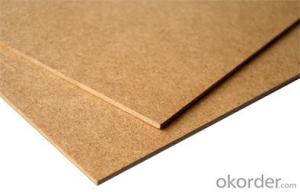Plywood, a versatile and widely used material in construction and furniture making, comes in various sizes that can be a bit overwhelming for beginners. But fear not, as we’re here to break down the dimensions and help you understand the world of plywood sizes. Whether you’re a DIY enthusiast or a professional, knowing the ins and outs of plywood dimensions is essential for your projects.
The Basics of Plywood
Plywood is made from thin layers of wood veneer, known as plies, that are glued together under heat and pressure. The grain of each layer is usually positioned at right angles to the grain of the adjacent layers, which gives plywood its strength and dimensional stability. The outer layers, called face and back veneers, are made from high-quality wood, while the inner layers can be made from lower-grade wood or wood chips.
Standard Plywood Sizes
When it comes to plywood sizes, there are some standard dimensions that you’ll encounter most often. These are primarily based on the 4X8-foot sheet size, which is the standard plywood sheet size in the United States. Here are the common sizes you might come across:
– 4X8 feet: This is the standard sheet size and is the most common. It’s perfect for large projects where you need a lot of plywood.
– 4X10 feet: Slightly larger than the standard size, this is useful for projects that require a bit more length.
– 5X8 feet: Offering more width, this size is great for projects that need a wider surface area.
Plywood Thickness Options
Not only does plywood come in different lengths and widths, but it also comes in various thicknesses. The thickness is measured in millimeters (mm) and is crucial for the structural integrity and appearance of your project. Here are the most common thicknesses:
– 3/4 inch (18mm): This is the most common thickness for plywood and is suitable for most applications, including furniture and cabinetry.
– 1/2 inch (12mm): Thinner than the standard, this is often used for lighter applications or when a thinner material is needed.
– 1/4 inch (6mm): The thinnest option, used for veneering or when a very thin layer of plywood is required.
Plywood Grades and Quality
Understanding the grades of plywood is just as important as understanding the dimensions. Plywood grades are determined by the quality of the wood, the presence of defects, and the overall appearance. Here are the main grades you’ll find:
– A-grade: This is the highest quality plywood, with the best appearance and fewest defects. It’s suitable for projects where the plywood will be visible.
– B-grade: Slightly lower in quality, B-grade plywood has more defects and is often used for projects that will be painted over or not as visible.
– C-grade: The lowest grade, C-grade plywood is used for structural purposes where appearance is not a concern.
Custom Plywood Sizes
While standard sizes are great for many projects, sometimes you need a custom size to fit your specific needs. Many plywood manufacturers and suppliers offer custom cutting services, allowing you to get the exact size you need for your project. This can save you time and material, as you won’t have to cut the plywood yourself.
Plywood for Different Applications
Different projects call for different types of plywood. Here’s a quick guide to help you choose the right plywood for your application:
– Interior Projects: For furniture, cabinetry, and other interior projects, A-grade plywood is recommended due to its high quality and good appearance.
– Exterior Projects: If you’re working on a project that will be exposed to the elements, consider using marine-grade plywood or exterior-grade plywood, which is designed to withstand moisture and resist decay.
– Structural Projects: For structural applications, such as beams or supports, C-grade plywood is often used due to its strength and lower cost.
Tips for Working with Plywood
When it comes to working with plywood, there are a few tips to keep in mind to ensure a successful project:
1. Measure Twice, Cut Once: Always double-check your measurements before cutting the plywood to avoid mistakes and wasted material.
2. Use the Right Tools: Invest in a good quality saw for cutting plywood, and use appropriate clamps and supports when working with large sheets.
3. Consider the Grain Direction: When cutting or applying force to plywood, be aware of the grain direction to prevent splitting or warping.
4. Protect Your Plywood: Store plywood in a dry place to prevent warping or damage from moisture.
5. Finishing Touches: Depending on the project, you may need to sand, paint, or apply a finish to your plywood. Make sure to use the appropriate products and techniques for the best results.
Conclusion
Understanding plywood sizes, grades, and applications is crucial for any woodworking or construction project. By knowing the dimensions, thickness options, and quality grades, you can select the right plywood for your needs and ensure a successful project. Remember to always measure carefully, use the right tools, and consider the specific requirements of your project when choosing plywood. With this knowledge, you’ll be well on your way to creating beautiful and functional pieces with confidence.

